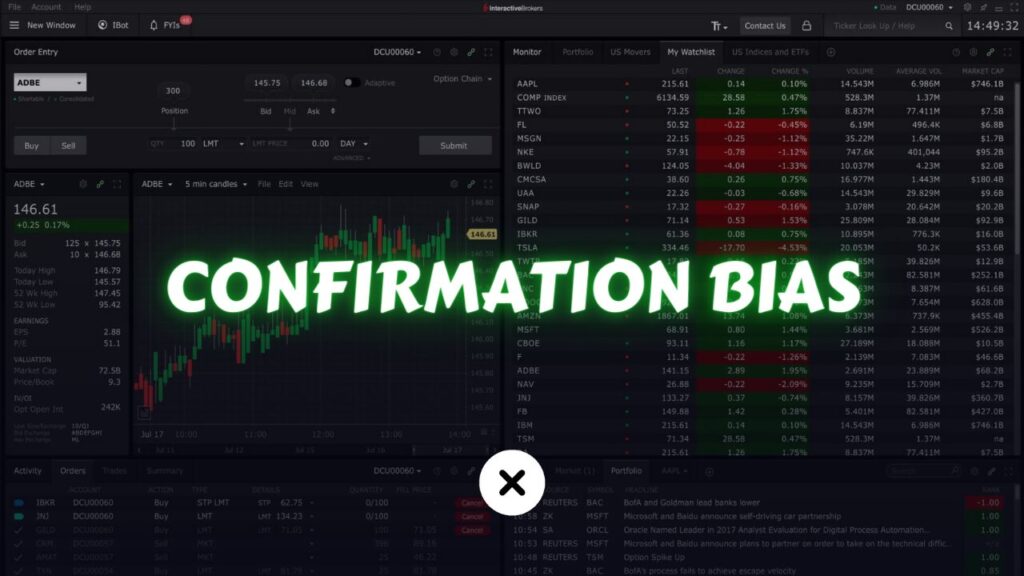
Trading in financial markets involves analyzing, planning, and understanding our thoughts and feelings. With so much to consider, traders often look for help to navigate the ups and downs of the market. That’s where the trading journal comes in – it may seem simple, but it’s a powerful tool that can change how we trade.
In this beginner’s guide, we’ll explore why the trading journal is so important. It’s not just about tracking trades; it’s about learning from them, staying accountable, and managing our emotions. The trading journal is like a guiding light in the world of trading, helping us see clearly and make better decisions. Let’s discover together how the trading journal can make a big difference in our trading journey.
What is a Trading Journal?
A trading journal is a systematic record-keeping tool where traders document their trades, strategies, emotions, and observations. While the format may vary from trader to trader, the fundamental purpose remains consistent: to analyze past performance, identify patterns, and make informed decisions for future trades.
Think of it as a diary of your trading journey, capturing both the highs and lows, successes and failures, with the aim of continuous improvement.
Benefits of Keeping a Trading Journal
Performance Analysis:
One of the primary benefits of maintaining a trading journal is the ability to analyze your performance objectively. By documenting every trade, including entry and exit points, position size, and rationale behind the trade, you gain valuable insights into what works and what doesn’t. This allows you to identify strengths to capitalize on and weaknesses to mitigate.
Emotional Discipline:
Trading can evoke a rollercoaster of emotions – from euphoria after a profitable trade to despair following a loss. A trading journal helps you manage these emotions by providing a structured outlet to reflect on your mindset during each trade. By noting down your emotions, you can better understand your psychological tendencies and develop strategies to maintain discipline during periods of volatility or uncertainty.
Pattern Recognition:
Patterns are ubiquitous in financial markets, and a trading journal serves as a repository for identifying them. By regularly reviewing your trade history, you can spot recurring patterns in your decision-making process, market behavior, or performance metrics. This enables you to fine-tune your strategies or even find new one, capitalize on profitable patterns, and avoid repeating past mistakes.
Accountability and Goal Setting:
Keeping a trading journal fosters accountability by holding you accountable for your trading decisions. It encourages you to set specific goals, whether they’re related to risk management, profitability targets, or skill development, and track your progress over time. This helps you stay focused and motivated, ensuring that every trade aligns with your overarching objectives.
Continuous Improvement:
Perhaps the most significant benefit of a trading journal is its role in facilitating continuous improvement. By adopting a reflective approach to trading, where you regularly review and analyze your journal entries, you can identify areas for growth and implement targeted strategies for improvement. Whether it’s refining your trading strategy, honing your risk management techniques, or enhancing your psychological resilience, a trading journal serves as a catalyst for ongoing development.
Learning from Mistakes:
Trading involves risks, and losses are inevitable. A trading journal helps you learn from your mistakes by documenting the reasons for unsuccessful trades. By reviewing your journal, you can identify common errors, such as emotional trading, impulsive decisions, or faulty analysis, and take steps to avoid them in the future. This self-reflection is essential for personal growth and becoming a better trader.
Components of a Trading Journal
Trading Strategy:
A trading strategy refers to a set of rules or guidelines that traders use to make decisions about entering, managing, and exiting trades in financial markets. By having your trading strategy in your trading journal, you can maintain clarity and ensure that you have a clear understanding of the reasons behind your decision to either open or avoid opening a trading position.
Trading Rules:
Trading rules are specific guidelines and principles that traders follow to make consistent and informed decisions in the financial markets. By documenting your “do’s” and “don’ts” in writing, you can adhere to your trading strategy and ensure that you do not violate its rules.
Example:
“If a highly volatile news coming out in the morning then don’t trade”
“If you lose 4 trades in a row in the same day. stop trading for that day”
Emotional and Psychological Factors:
This can help identify any patterns of behavior or biases that may impact trading performance. Traders often include a section to reflect on their emotional state before, during, and after each trade. and psychological factors that may have influenced their decision-making process.
Note any feelings of fear, greed, overconfidence, or hesitation that may have impacted your decision-making process. Understanding your emotional struggles is a key motivation for using a trading journal. It is important to identify and address the areas where your emotions impact your trading performance.
Outcome and Performance Metrics:
Record the outcome of each trade – whether it was a win, loss, or breakeven – along with the corresponding profit or loss. Track key performance metrics such as win rate, average profit/loss per trade, risk-reward ratio, and maximum drawdown.
Trade Details:
Record essential details of each trade, including the date, time, instrument traded, entry and exit prices, position size, and direction (long or short).
Document the reasons behind each trade, including any technical or fundamental analysis, signals, or indicators that influenced your decision.
Conduct a thorough post-trade analysis to review the efficacy of your trade. Identify what went well, what could have been improved, and any lessons learned for future trades.
Tips for Effective Journaling
Be Consistent: Make it a habit to update your trading journal after every trade, without fail. Consistency is key to deriving meaningful insights and maintaining accountability.
Be Honest and Transparent: Don’t sugarcoat your entries or omit important details. Be honest with yourself about your strengths, weaknesses, and areas for improvement.
Use Charts and Visuals: Incorporate charts, graphs, and visuals to illustrate your trade setups, entry and exit points, and performance metrics. Visual representations can enhance clarity and facilitate easier analysis.
Review Regularly: Set aside dedicated time to review your trading journal regularly – whether it’s daily, weekly, or monthly. Use this time to reflect on your progress, identify trends, and adjust your trading plan accordingly.
Adapt and Evolve: As you gain experience and insights from your trading journal, be willing to adapt and evolve your strategies. Markets are dynamic, and what worked yesterday may not work tomorrow. Stay flexible and open-minded in your approach.
Conclusion
In the fast-moving and uncertain world of finance, a trading journal acts like a guiding light, helping you see clearly and stay accountable. By carefully writing down your trades, looking at how you did, and thinking about what you learned, you can handle the tricky parts of trading better. Whether you’re just starting out or have been trading for a while, a trading journal is a powerful tool. It’s not just a notebook – it’s a way to improve and succeed in your trading adventure.



